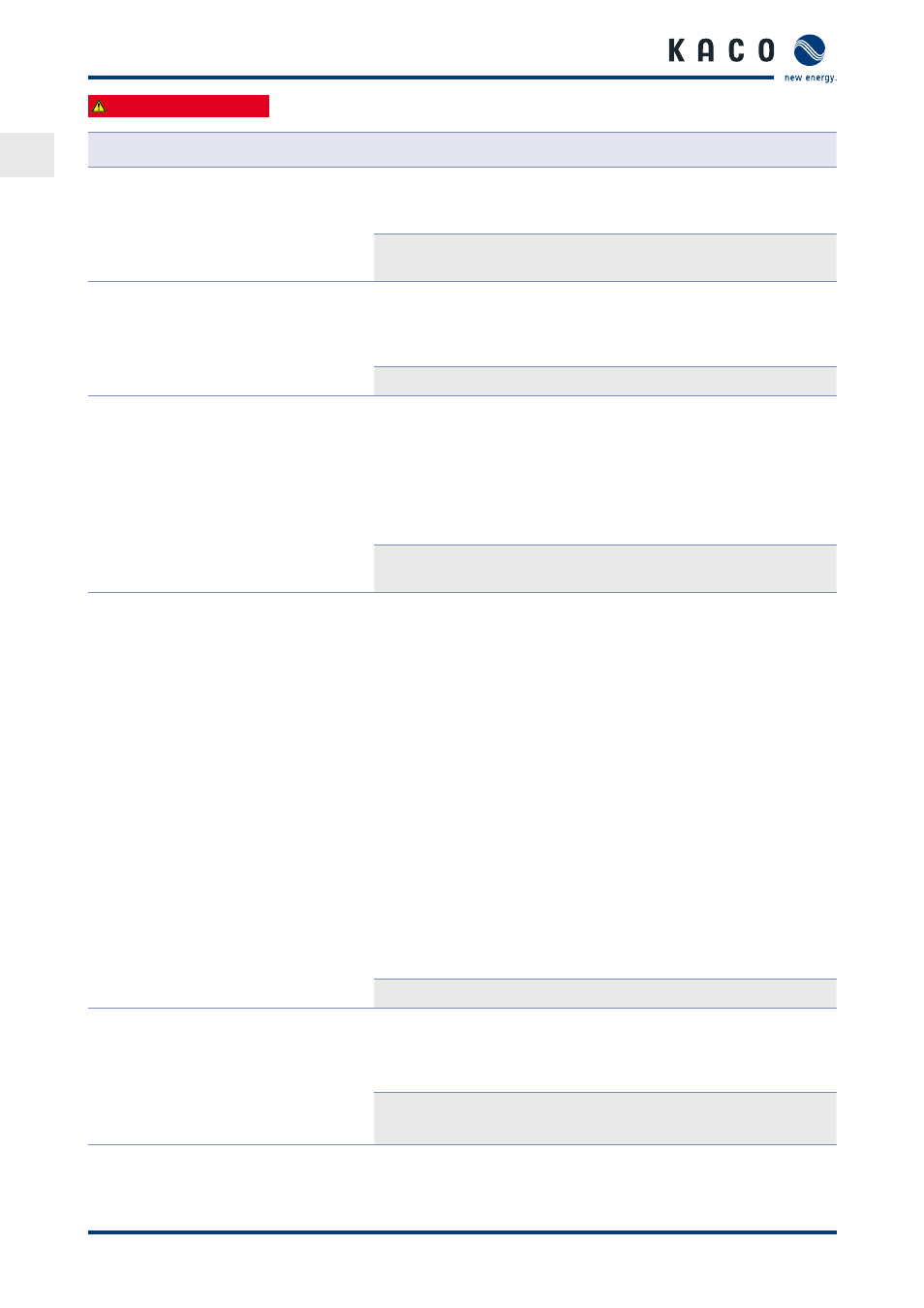KACO Powador 3200 - 6600 User Manual
Page 44

EN
EN
Maintenance/Troubleshooting
Page 44
Operating Instructions for Powador 3200-6600_EN
Authorised electrician
Fault
Cause of fault
Explanation/remedy
By
The grid fuse trips.
Damage to the
inverter’s hard-
ware.
If the line fuse trips immediately when the inverter goes
into feed-in mode (after the start-up period is complete), the
inverter’s hardware is probably damaged.
"
Contact KACO Service to test the hardware.
E
Daily yields do not
correspond to the
yields on the feed-in
meter.
Tolerances of
the measuring
elements in the
inverter.
The measuring elements of the inverter have been selected
to ensure maximum yields. Due to these tolerances, the daily
yields shown may deviate from the values on the feed-in
meter by up to 15 %.
"
No action
-
The inverter is
active but is not
feeding into the
grid. Display: "Wait-
ing for feed-in"
•
Generator volt-
age too low
•
Grid voltage or
PV generator
voltage unsta-
ble.
•
The PV generator voltage or power is not sufficient for
feed-in (solar radiation is too low).
•
The inverter checks the grid parameters before the feed-in
process begins. The length of time it takes to switch back
on again differs by country according to applicable stand-
ards and regulations and can take several minutes.
•
The starting voltage may have been set incorrectly.
"
Adjust starting voltage in the Parameter menu if
required.
K
Noise emission
from the inverter.
Particular ambient
conditions.
When there are certain ambient conditions, the units may
emit audible noises.
•
Grid interference or grid failure caused by particular loads
(motors, machines, etc.) which are either connected to
the same point on the grid or located in the vicinity of the
inverter.
•
In cases of volatile weather conditions (frequent switch-
ing between sunny and cloudy conditions) or strong solar
radiation, a light hum may be audible due to the increased
power.
•
Under certain grid conditions, resonances may form
between the unit’s input filter and the grid, which may be
audible even when the inverter is switched off.
These noise emissions do not affect the operation of the
inverter. They do not lead to loss of efficiency, failure,
damage or to a shortening of the unit’s service life.
People with very sensitive hearing (particularly children) are
able to hear the high-frequency hum caused by the inverter’s
operating frequency of approximately 17 kHz.
"
No action
In spite of high
radiation levels, the
inverter does not
feed the maximum
power into the grid.
The device is too
hot and the system
limits the power.
Because the temperatures inside the unit are too high, the
inverter reduces its power to prevent damage to the unit.
Note the technical data. Ensure that the convection cooling is
not impeded from the exterior. Do not cover the cooling fins.
"
Ensure sufficient cooling of the unit.
"
Do not cover the cooling fins.
B, E
Table 6:
Troubleshooting
